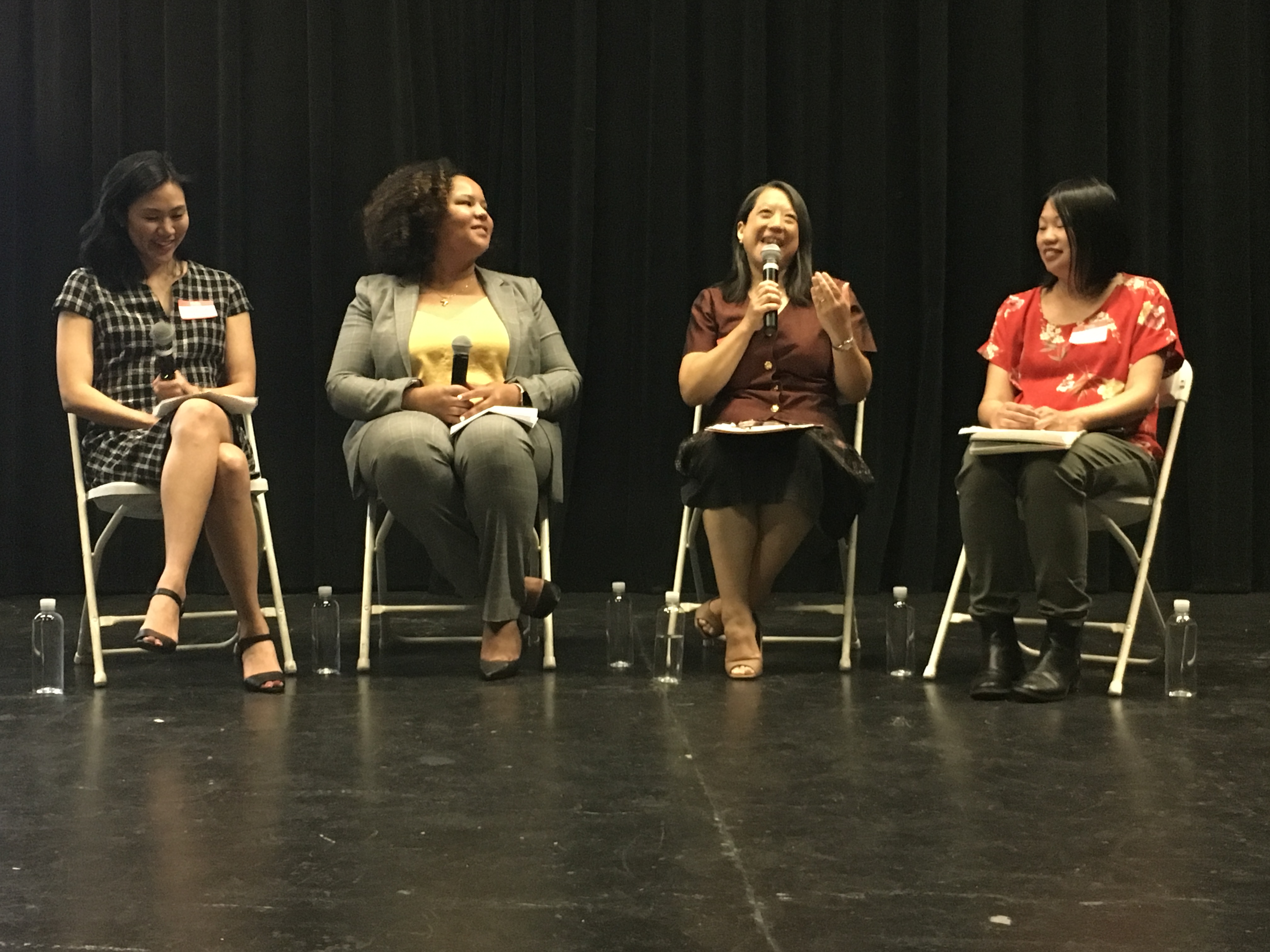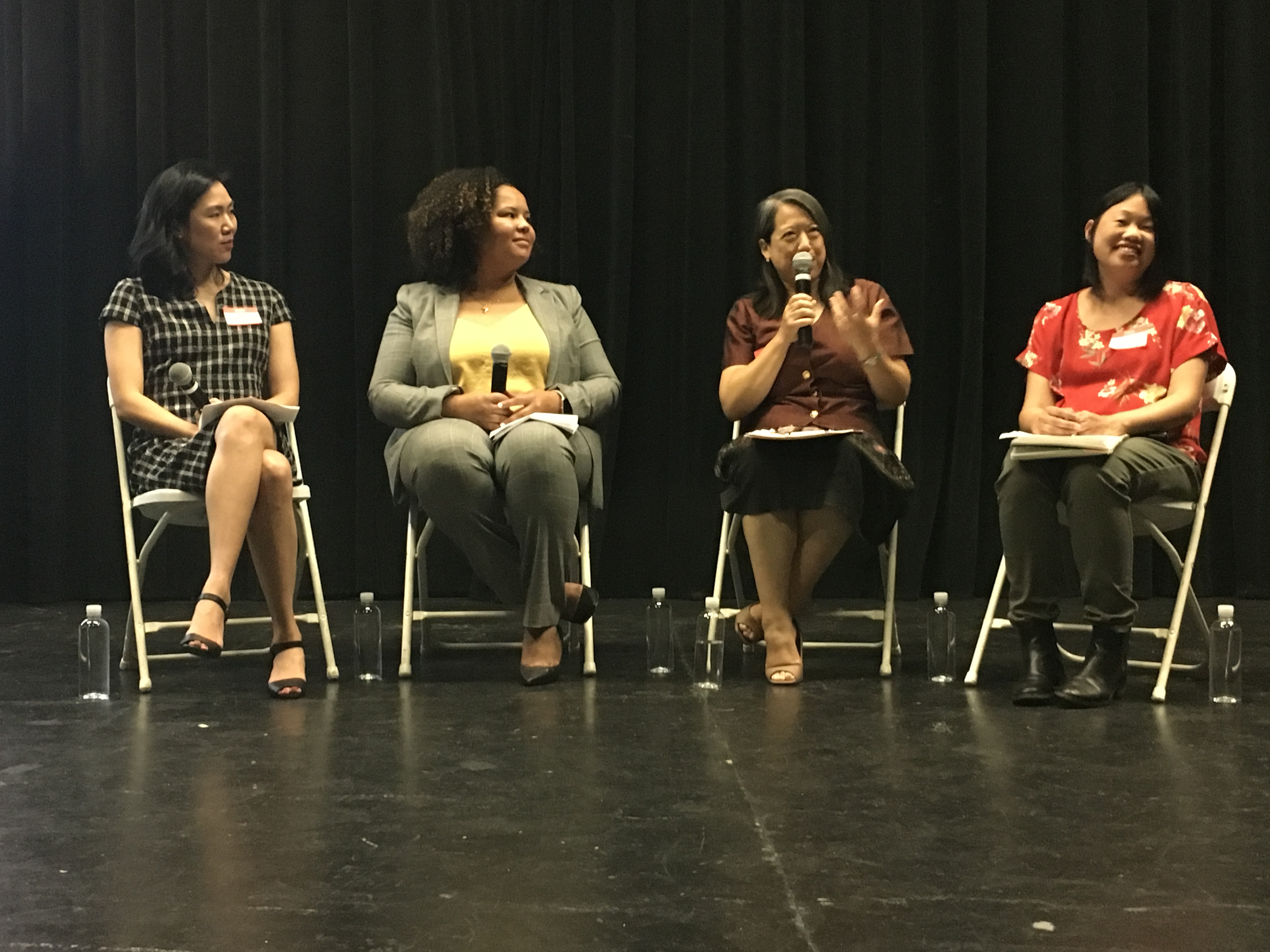ICYMI - Claiming Our Space: The Role of Creative Placemaking in Preservation
On October 15th, LISC LA hosted a half-day event on community preservation tactics. The event, “Preserving Cultural Neighborhood Gems: A Series of Case Studies,” explored three unique strategies to protect communities against displacement. The last panel of the day was on creative placemaking. This panel explored how communities of color can use creative placemaking as a means to anchor their presence, honor their history, and provide opportunities for economic development. On the panel were leaders in the field: Laura Choi, Research Manager at the Federal Reserve Bank of San Francisco’s Community Development Team, Kristen Gordon, Economic Development Deputy for Councilmember Marqueece Harris-Dawson, Chancee Martorell, Founder & Executive Director of Thai CDC, and Erika Gee, Senior Planner at Chinatown CDC in San Francisco.

Laura Choi, moderator of the panel, began the conversation by defining creative placemaking by stating that creative placemaking is the act of “enhancing the role of artists within the community development process so that the resulting communities better reflect and celebrate local culture, heritage and values.” Others have defined it as “community partners strategically shaping the physical and social character of a neighborhood, town, tribe, city, or region around arts and cultural activities.” By leveraging the unique power of arts and culture, creative placemaking empowers people to build vibrant, resilient, and socially connected communities in the places they call home. As an example, when developing a new building, a developer may enlist a local artist early on in the design process to create a space that is culturally relevant to the local community, which can result in a greater sense of pride and ownership among community members.
The panelists discussed how creative placemaking initiatives can not only showcase the culture of the local community, but can also produce economic growth for the area. For example, Erika Gee discussed how San Francisco’s Chinatown CDC created an art gallery called ‘41 Ross’ to showcase Chinatown through art and culture. 41 Ross is a collaboration between the Chinatown Community Development Center and the Chinese Culture Center of San Francisco and is an active community space that brings together local residents, neighbors, and visitors. 41 Ross is a space that promotes dialogue, appreciation, and creative engagement around the local culture practice by everyday people in Chinatown. As a result of its cultural programming, 41 Ross has activated public spaces in Chinatown and brings economic growth to the neighborhood.
One of the exhibits 41 Ross hosted was a Chinese fashion exhibit. Inspired by a blog written by two artists called ‘Chinatown Pretty,’ the exhibit showcased local Chinatown seniors and their traditional clothing styles. The exhibit was widely popular and gained the attention of many tourists. Due to its success, the gallery’s participating vendors now have a book deal on the gallery’s concept. This creative placemaking initiative not only brought visibility to stories told through the lens of the community, but also provided an economic opportunity for local small businesses.
In addition to 41 Ross, San Francisco’s Chinatown CDC has been involved in supporting other creative placemaking initiatives throughout their 40 year history like the Chinese New Year Parade and Noodles Fest. The Chinese New Year Parade began back in 1858 and was started by a community of Chinese immigrants. The parade takes place each year in February and happens alongside the Community Fair, which hosts Chinese folk dancing, opera, drumming and lots of opportunities for shopping. Noodles Fest is another public activity that focuses on highlighting Chinese food. The Fest brings together the Italian community in North Beach and the Chinese community in Chinatown to highlight their native noodle dishes. Participants get samples of both dishes and vote on their favorite. Vendors also provide noodle-making demonstrations and opportunities to learn about the Italian and Chinese food culture. Noodles Fest has gained popularity through the years and was voted “Best of the Bay” by the San Francisco Guardian.

Additionally, Chancee Martorell highlighted two examples of how Thai CDC in Los Angeles has utilized creative placemaking as a means to bring commercial opportunities to East Hollywood without playing into the “Disney-fication” of the community. Each year, Thai CDC holds Thai Cultural Days in an East Hollywood park to celebrate and teach others about the culture of Thailand through dance and musical performances. During the celebration, vendors can sell Thai food, clothing, jewelry, or other arts and crafts, and local organizations can promote their services and programs to the community. The goal of Thai Cultural Day is to preserve and promote Thai culture and to provide an opportunity for different ethnic groups in Los Angeles to learn about and appreciate the Thai culture. Over the last 27 years, it has become a major attraction in Los Angeles and has provided a revenue source for local businesses and vendors.
Over the last 14 years, Thai CDC has also helped to host a Thailand New Year celebration, called ‘Songkran’. Songkran Festival is celebrated each April along 30 blocks of Hollywood Boulevard and attracts around 100,000 people annually. Songkran is another day to celebrate and promote Thai culture, food, and entertainment on the streets of Thai Town. Over 200 vendors participate, selling a variety of Thai goods. Attendees also get an opportunity to take part in a traditional water blessing, which involves the transfer of respect, love and good fortune between generations using water. Other activities range from martial arts to Thai pop and alternative music.
Outside of these celebrations, Thai CDC has been intentional about supporting the growth of a variety of businesses in order to avoid the growth of a homogenous economy. Chancee gave Thai restaurants as an example - because Thai food has become increasingly popular in Los Angeles, there are more Thai restaurants opening up in Thai Town. However, Chancee warns that lack of diversity in goods and services can result in an overreliance on one product and makes it difficult for other much-needed businesses to occupy retail space.
Chancee was born in Thailand and raised in Los Angeles and she spoke about how important it was to have Thai cultural experiences showcased in LA. Creative place-making is a great tool to allow Thailand natives to see themselves reflected in the community in which they live, and thus can contribute to better social cohesion in diverse neighborhoods.

Kristen Gordon echoed this sentiment when discussing the Destination Crenshaw project. As an African American woman and a native to the Crenshaw neighborhood in LA, Kristen discussed how important it was for creative place-making initiatives to highlight the local culture in changing neighborhoods. Kristen showcased the Destination Crenshaw project, which is a 1.3 mile long outdoor art and culture experience celebrating black Los Angeles along the to-be-built Crenshaw/LAX light-rail line. This community-inspired project will use the iconic Crenshaw Boulevard as a canvas and anchor for new public art and streetscape design. According to the website, Destination Crenshaw will be built for, by, and in honor of the black community in Crenshaw —the largest black community west of the Mississippi River.
The world renown designers of the project are planning extensive upgrades including a new public amphitheater with a raised overlook, pocket parks and parklets, two large monuments, business façade improvements, hundreds of new trees, and rotating works of public art by key African American artists. The art at the open air museum will be free and public, and is intended to be a reflection of the community’s past and its future. The project will be centered around four themes: improvisation, firsts, dreams, and togetherness, and will showcase various modalities for education, environmental equity, local business investment, and arts and economic development. Many have stated that placemaking at this scale, with black culture at the forefront of the discussion, is unprecedented and could put an end to cultural erasure in the community.
As Kristen noted, “Destination Crenshaw is a new project… to really pull something like this off, it takes a village.” She attributed the community-led advisory council members and local elected officials for supporting and advocating for the project. The Destination Crenshaw team is continuing to seek public and private donations to fund the $100 million project and plan to break ground soon. To learn more about Destination Crenshaw, visit their website here.
Each of the panelists described how creative placemaking has the potential to instill a deep sense of community pride in cultural neighborhoods while also supporting economic revitalization in changing neighborhoods. Creative placemaking, when used correctly, can stem the tide of displacement by anchoring people socially and financially to their communities. LISC LA is proud to support current and future partners in their creative placemaking work. We thank our panelists for sharing their experiences and for doing this important work in their communities.
The work of LISC LA is made possible by supporters like the Weingart Foundation. With Weingart’s support, we have been able to pull support from private and government sources to support the work of our partners to foster healthy, thriving communities.